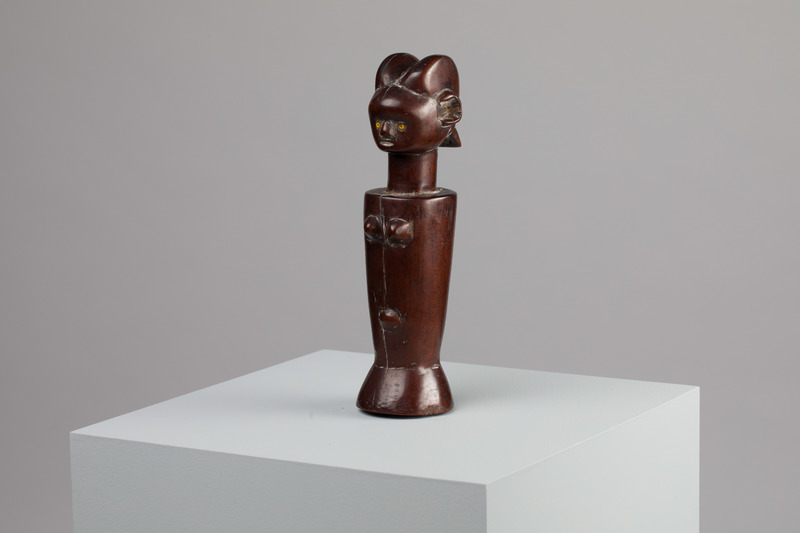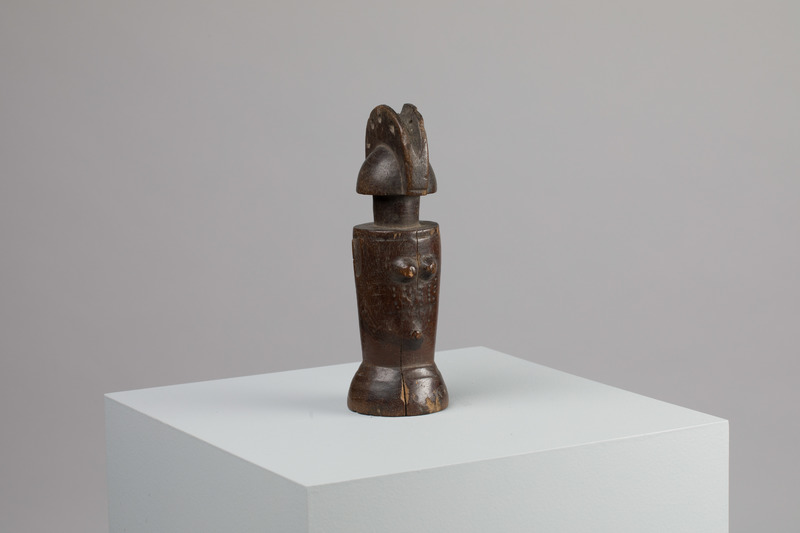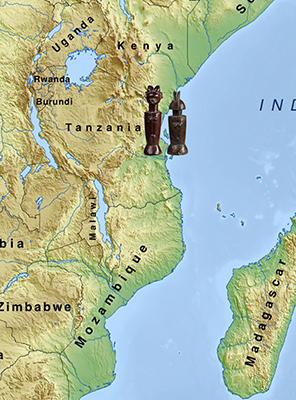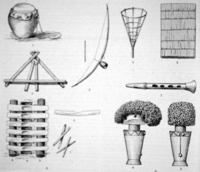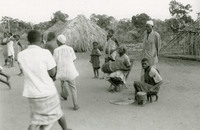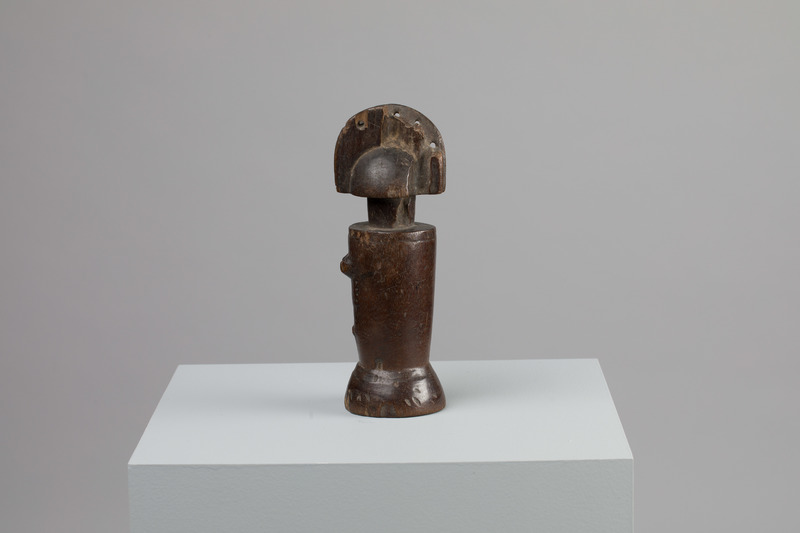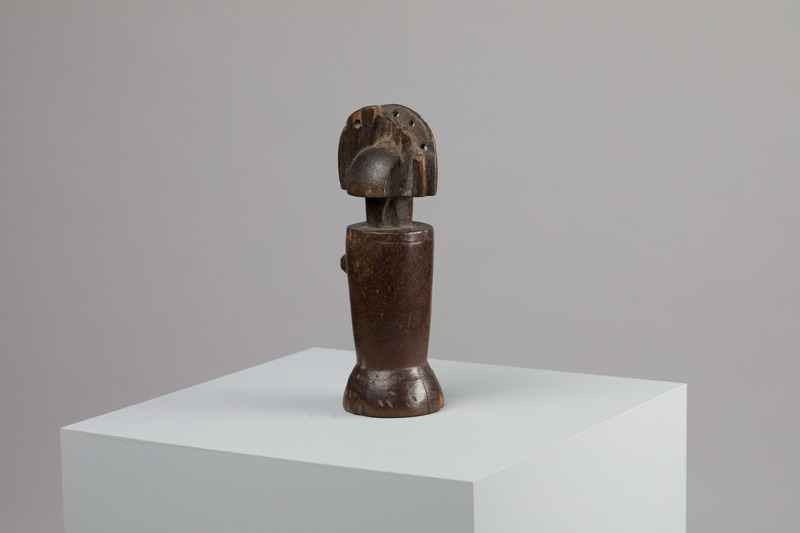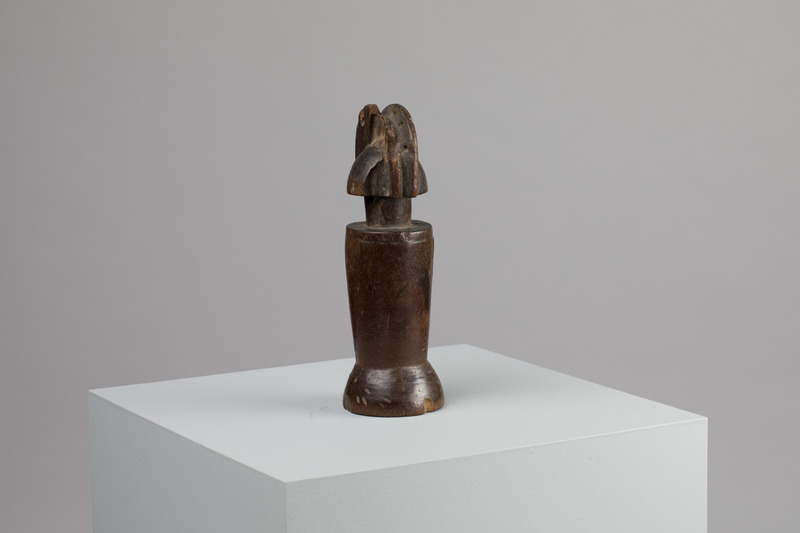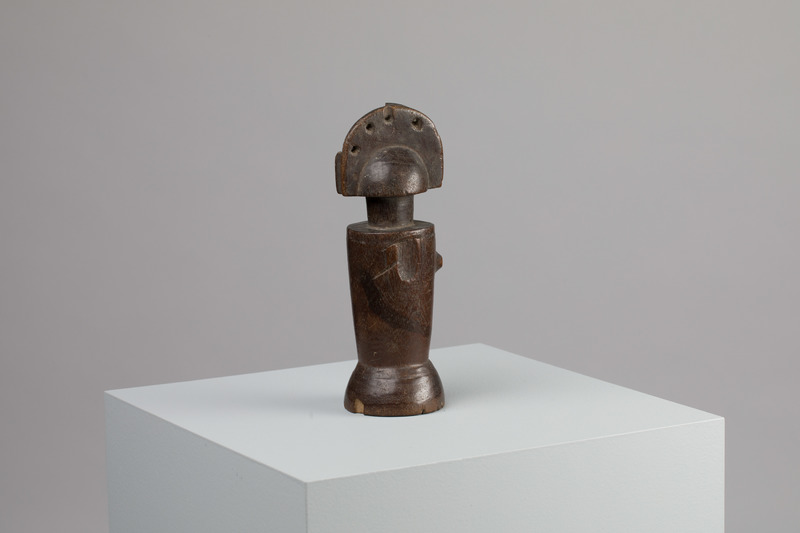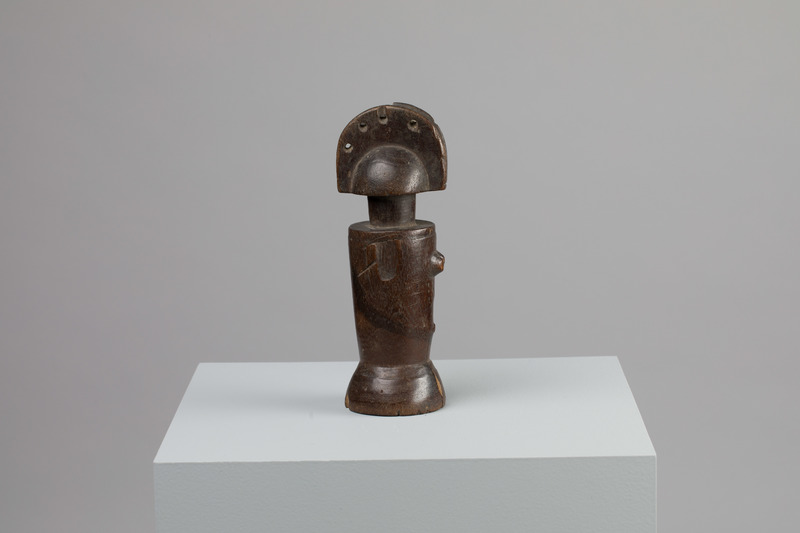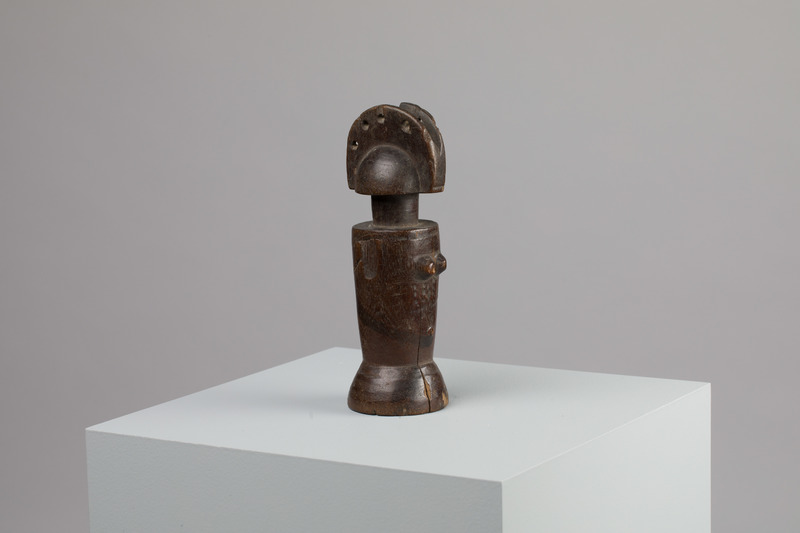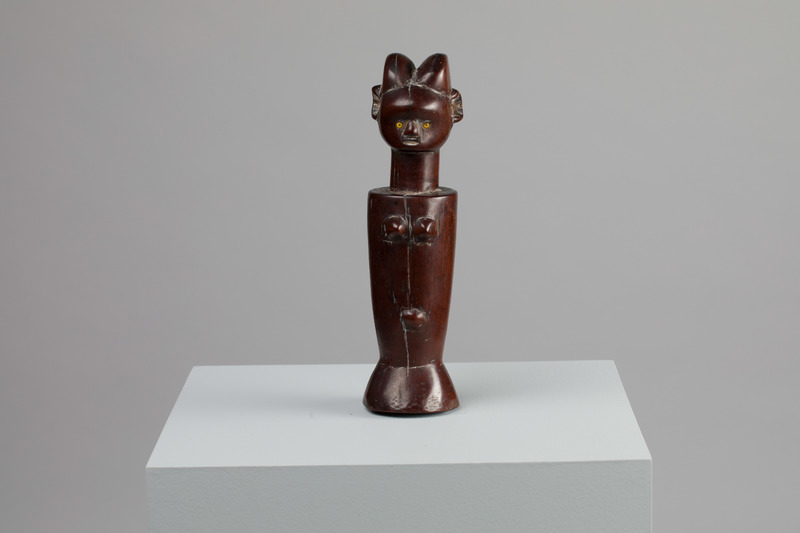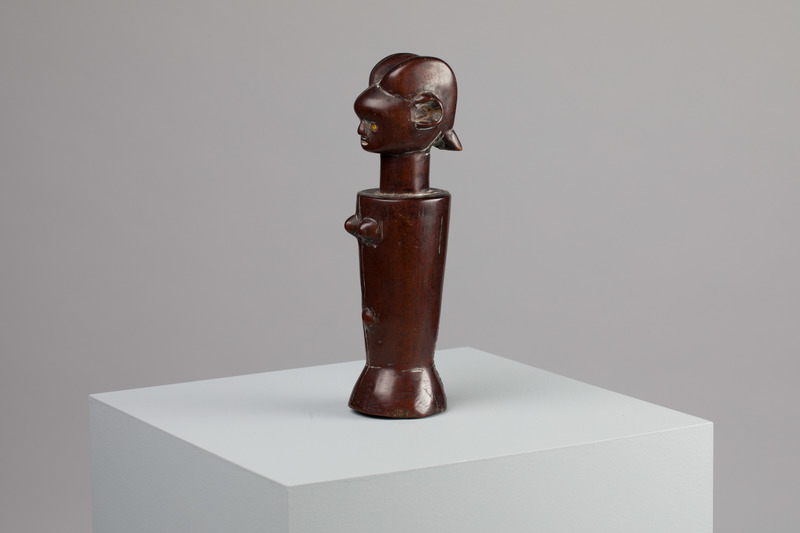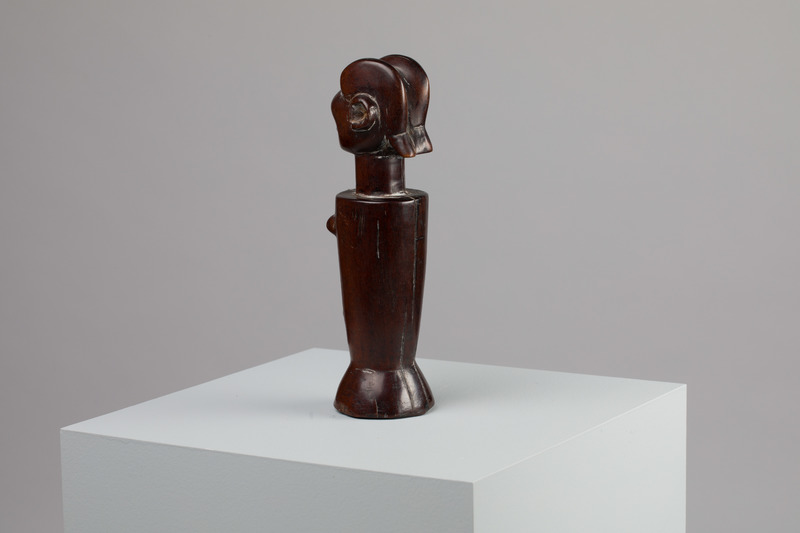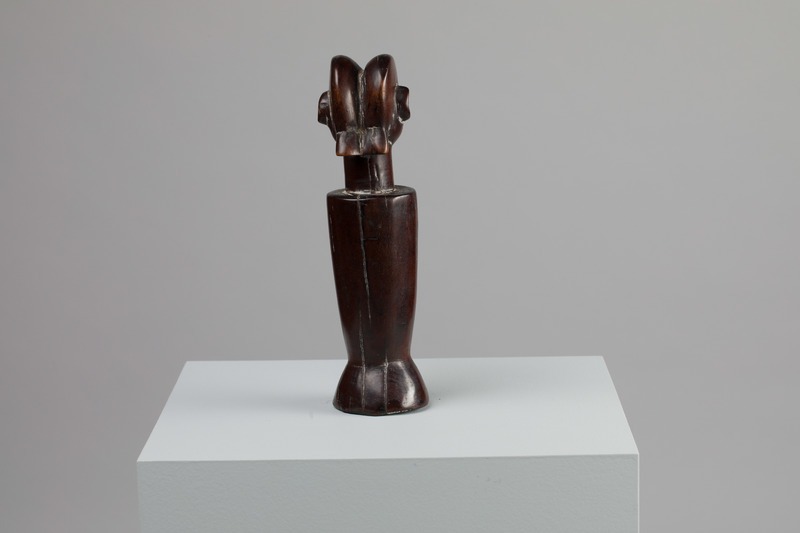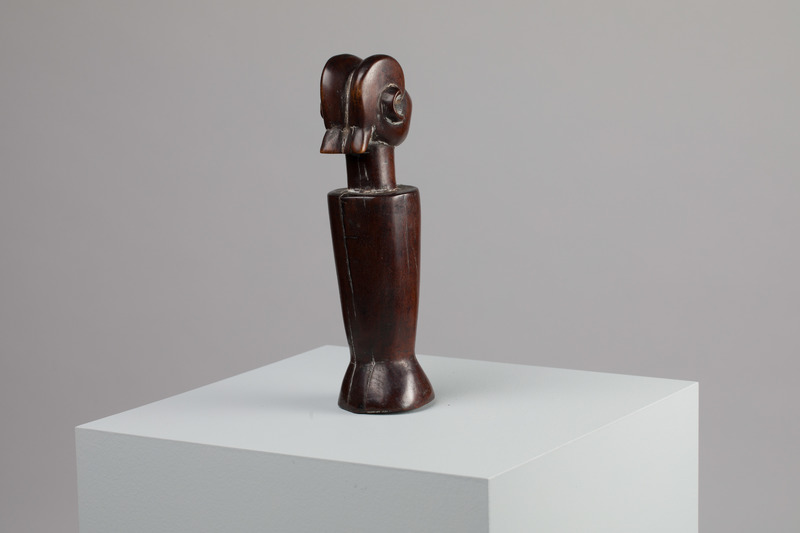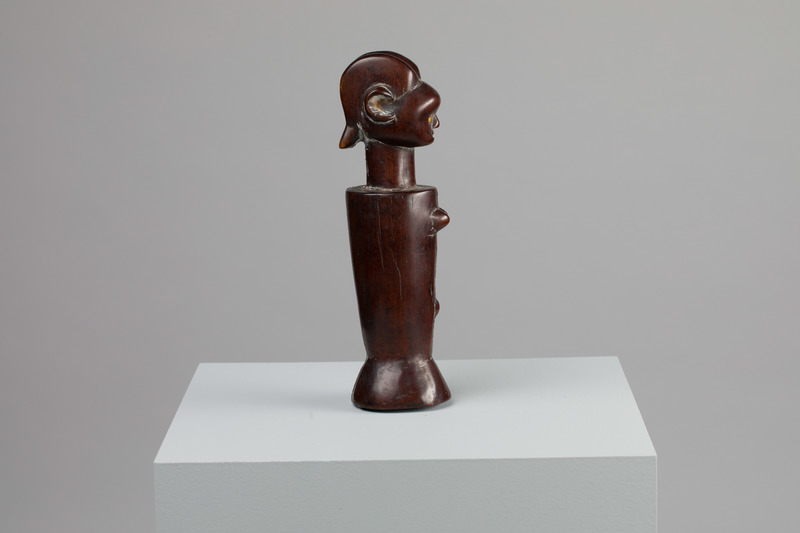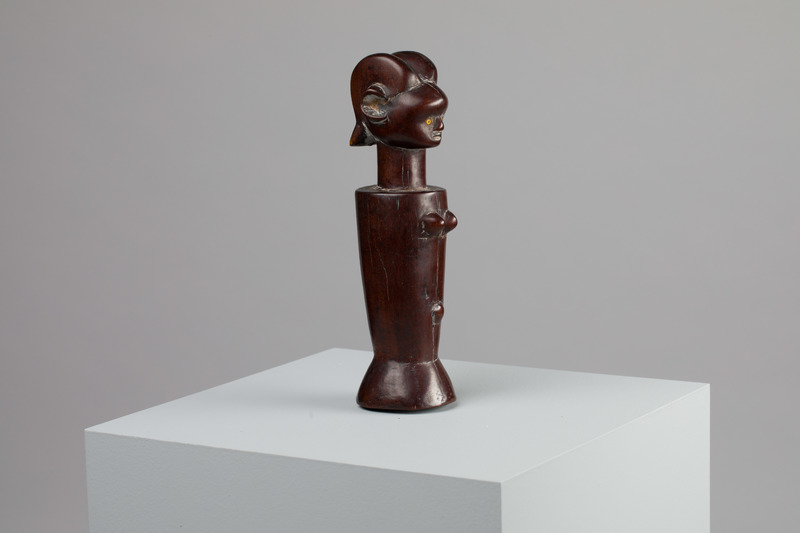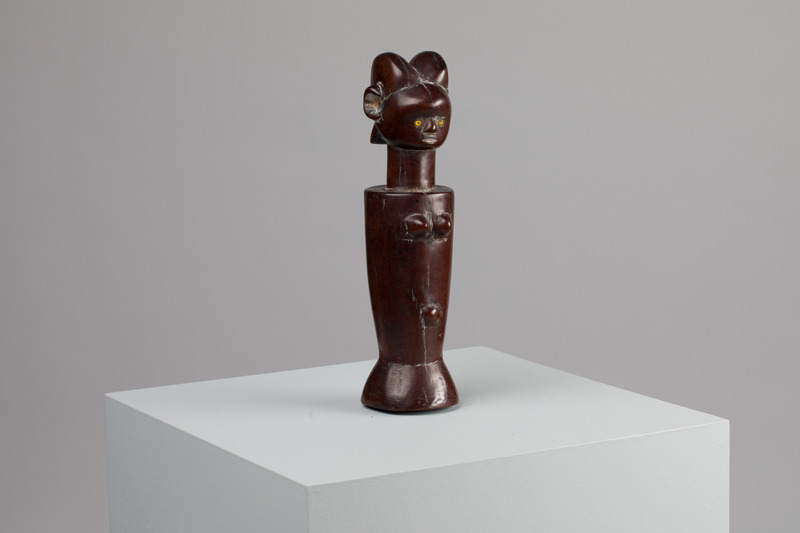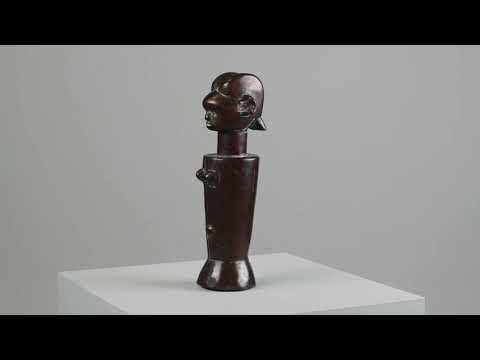Catalogue 65
Figures, mwana hiti
Zaramo or Kwere people, Tanzania
20th century
Wood and beads
2016.67: 7 3/4 x 2 1/8 x 2 1/4 inches (19.5 x 5.4 x 5.7 cm)
2016.68: 6 3/4 x 2 1/2 x 2 1/4 inches (17.1 x 6.4 x 5.7 cm)
Palmer Museum of Art
Purchased from Allen and Barbara Davis
2016.67-68
Mwana hiti figures are typically small (about 10 to 20 cm tall) with elaborate, bifurcated hairstyles, breasts, and a navel—all characteristics linked to idealized womanhood and fertility. These sculptural forms are understood to embody all “at once the vagina, the penis, a child, and the clan” (Swantz 1995, 39), or symbolic links to the founding couple of one’s ancestral clan (Felix 1990, 487). They function primarily as ritual objects and teaching tools in girls’ initiation practices. The Kiswahili name for these objects, mwana hiti, translates as “child of wood” or “child of the chair” (Felix 1990, 83–84). One of many explanations of the significance of the name relates to the Kwere and Zaramo custom in which a young graduate sits on an ancestral stool or chair to show gratitude for the ancestors to whom she owes her gifts of fertility and health and to whom she is thereby officially linked (Felix 1990, 83).
Facial features are only lightly suggested because the figures are not meant to be individualized representations, but instead refer to spiritual ancestors, fertility, and the continuation of life and lineage. The prominent square nose and imported European glass beads inserted as eyes on figure 2016.67 are standard features of such sculptures produced in the region. The tight pattern of small divots on the torso portion of figure 2016.68 may represent scarification marks, another common symbol of beauty and fertility. Small tufts of hair are inserted into the holes at the top of the carved and crested coiffure during a girl’s initiation training, but this highly powerful and personal element is removed before a figure is transferred to another owner or handed down to a member of the next generation (Felix 1990, 81).
Mwana hiti figures also appear as a finial on musical instruments, furniture, staffs, or ancestral markers in the form of grave posts (Jahn 1994, 120–40; Felix 1990, 420). A wide variety of meanings operates in accordance with these diverse representations and functions. Two such examples are featured in the African Brilliance exhibition: the exquisitely carved zither from the Smithsonian National Museum of African Art collection (2015-4-17) and the gourd with mwana hiti stopper in the Palmer Museum of Art collection (2016.71).
The Kwere and Zaramo of eastern Tanzania share overlapping characteristics with many neighboring matrilineal groups in the region but are especially aligned with the Luguru culture. According to oral tradition, Kwere and Zaramo clans may actually originate with the Luguru; their remarkably analogous social structures support this scenario (Brain 1962, 231; Mshana 2013, 139). Scholars also find comparable similarities in the clans’ artistic and ancestral traditions, although the encoded symbolism and interpretations vary across cultural uses (Mshana 2013, 140).
JMP
References
Brain, James L. 1962. “The Kwere of the Eastern Province.” Tanganyika Notes and Records 58–59:231–41.
Felix, Marc Leo. 1990. Mwana Hiti: Life and Art of the Matrilineal Bantu of Tanzania. Munich: Fred Jahn.
Jahn, Jens, ed. 1994. Tanzania: Meisterwerke afrikanischer Skulptur, Sanaa za Mabingwa wa Kiafrika. Munich: Fred Jahn.
Mshana, Fadhili. 2013. “Art for Life among Coastal Peoples of Tanzania.” In Shangaa: Art of Tanzania, edited by Gary van Wyk, 135–59. New York: QCC Art Gallery, City University of New York.
Swantz, Marja-Liisa. 1995. Blood, Milk, and Death: Body Symbols and the Power of Regeneration among the Zaramo of Tanzania. Westport, CT: Bergin & Garvey.

